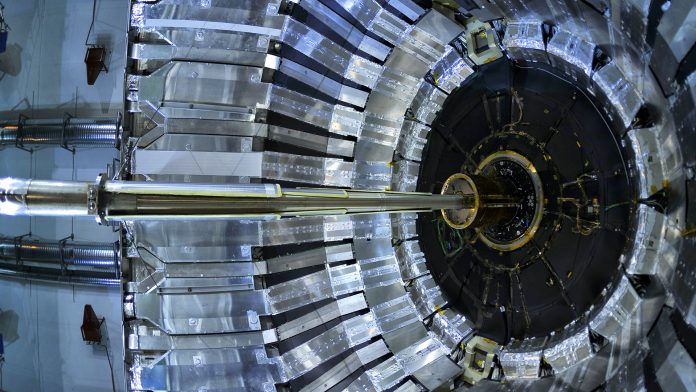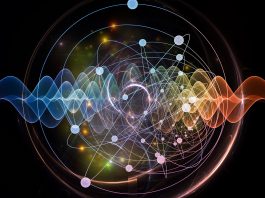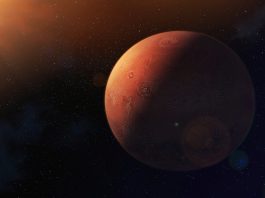Anders Ryd, Professor of Physics at Cornell University and Cornell Laboratory of Accelerator-based ScienceS and Education (CLASSE), discusses the evolution of CERN’s Large Hadron Collider and his involvement in the CMS detector.
The Large Hadron Collider (LHC), located at CERN in Switzerland, is the world’s largest and most powerful particle accelerator. It consists of a 27km ring of superconducting magnets with a number of accelerating structures to boost the energy of the particles along the way.
The main goal of the LHC is to answer the many unsolved questions posed by the Standard Model of particle physics – a theory developed in the early 1970s that describes the fundamental particles and their interactions.
A total of nine experiments are taking place at the Large Hadron Collider, which uses detectors to analyse the myriad of particles produced by collisions in the accelerator. These experiments are run by collaborations of scientists from institutes all over the world. The main experiments are ATLAS and CMS, which use general-purpose detectors to investigate the largest range of physics possible, and ALICE and LHCB, which have specialised detectors designed to focus on particular phenomena.
The first operational period of the LHC, Run 1, started in 2010 and continued until 2012, before undergoing a ‘Long Shutdown’ phase for essential maintenance and upgrades. Run 3 is now in progress after the LHC was restarted in 2022 following a three-year shutdown.
Designed to probe even more physics, the LHC is planned to be upgraded to the High-Luminosity Large Hadron Collider (HL-LHC) as of 2029. The objective is to increase the integrated luminosity by a factor of ten beyond the LHC’s design value. The HL-LHC will allow physicists to study known mechanisms in greater detail, such as the Higgs boson, and observe rare new phenomena that may be revealed.
Anders Ryd is a Professor of Physics at Cornell University and Cornell Laboratory of Accelerator-based ScienceS and Education (CLASSE), where he has worked since 2003. The Large Hadron Collider has been a large part of Professor Ryd’s work and he has been involved in the CMS experiment since 2005. The Innovation Platform spoke to Professor Ryd to learn more about his career progression alongside the LHC and his current goals and objectives.
Can you start by telling us more about your current work and research focuses?
When I started working on the CMS experiment, I was first involved with the commissioning of the original CMS pixel detector and I served as run coordinator for CMS at the start of the LHC operations during Run 1.
I have worked on searches for super symmetry and Higgs physics. Together with students and postdocs at Cornell, we were involved in the Run 2 analysis that searched for ttH – a Higgs boson produced in association with a top-anti-top quark pair. This Higgs production mechanism was observed in 2018 and is of interest as it provided a direct measurement of the Higgs coupling to top quarks. Many other decays of the Higgs, such as Higgs to two photons, proceeds via loop diagram with virtual top quarks.
Another aspect of my research involves the development of new detectors for the CMS upgrades. In the early stages of the upgrades, I worked on the concept of the track trigger for CMS with a new type of module that locally correlate hits and produce trigger primitives, stubs, that can be used to find charged particle trajectories.
More recently, my work has focused on the track finding algorithm and how this is implemented in hardware. After the strong endorsement by the P5 (Particle Physics Project Prioritization Panel) in 2014 for the HL-LHC upgrades, I took on the lead role in the US to co-ordinate the National Science Foundation (NSF) scope of the HL-LHC upgrades for CMS. From 2015-2020, we went through a series of reviews that culminated in February 2020 by the approval of the CMS upgrades for the HL-LHC and the start of the construction project.
Can you elaborate on your involvement in the CMS experiment?
Currently, I am the Principal Investigator (PI) for the NSF-funded contributions to the CMS upgrades for the HL-LHC. This involves the upgrades of the forward pixel detector, the readout for the barrel calorimeter and forward muons, as well as upgrades to the muon trigger and the new track trigger.
In this role, I am co-ordinating the US NSF contributions with the full CMS upgrade effort. This involves the technical progress, as well as issues related to funding and cost sharing across different agencies supporting these upgrades. I am also maintaining a technical involvement with the Track Trigger where my group at Cornell is involved with algorithm development for the track trigger. My group is also involved in data analysis.
For Run 2, we have been part of the effort to measure the cross-section for Higgs produced in association with top-anti-top pairs. This Higgs production channel was observed in 2018 and we have pursued the measurement of the differential cross-section as a function of the Higgs boson transverse momentum. For Run 3, we were involved in the search for the rare Higgs decay to a Z boson and a photon.
The Large Hadron Collider is due to be upgraded to the High-Luminosity LHC by 2029. What is the motivation for this?
The Large Hadron Collider started operation in 2010, first at a lower centre-of-mass energy of 7 TeV, but most running has been at 13 TeV or higher. In Run 3, the LHC is now operating at 13.6 TeV. The design of the LHC was for 14 TeV, but magnets must be trained to operate at high magnetic fields and the 13.6 TeV energy is a trade-off between time spent training magnets and obtaining a higher energy.
By the end of Run 3, in 2026, the LHC will have operated for over 15 years and further progress will be slow as we accumulate data at approximately constant rate. To continue to make progress, an upgrade of the facility is required.
The option of higher energy will require a new facility, such as the Future Circular Collider (FCC), but the Large Hadron Collider can be upgraded to provide increased luminosity. This High-Luminosity LHC upgrade will deliver an integrated luminosity to the experiments that is an order of magnitude larger. This larger luminosity will allow key questions about the properties of the Higgs boson to be addressed.
Following the discovery of the Higgs by CMS and ATLAS at the LHC in 2012, the properties of the Higgs boson have continued to be studied with more decay modes of the Higgs being discovered. The data are so far consistent with the Standard Model of particle physics. A key goal of the HL-LHC is to measure these quantities much more precisely to put stronger constraints on any deviations from the Standard Model.
Another Higgs-related physics process that will require the larger data sample at the HL-LHC is the di-Higgs production. The observation of final states with two Higgs bosons will allow the measurement of the Higgs ‘self-interaction’.
Besides Higgs physics, the HL-LHC physics programme includes the searches of new physics, e.g., weakly interacting SUSY and other rarer processes that we don’t have sufficient data to observe before the HL-LJC upgrade.
What are the main challenges facing the CMS HL-LHC upgrades?
The much higher luminosity at the HL-LHC leads to several challenges that will need to be addressed by the upgrades to the detectors. There are three principal challenges, including that:
- The detectors need to survive in the harsh radiation environment;
- The detectors need to have higher granularity to separate the particle in the high occupancy produced by the large number of particles produced; and
- We must be able to select the events we want to keep for further analysis (known as triggering).
Like the current Large Hadron Collider operations, bunches of protons collide every 25 ns, or at a frequency of 40 MHz, for the HL-LHC. This means that the way we increase the luminosity is to have more proton-proton collisions in each bunch crossing. At the ultimate HL-LHC luminosity, each bunch collision will produce about 200 proton-proton interactions, but only a very small number of these interactions are interesting, and we want to keep these for further analysis.
The challenge with high occupancies and radiation damage is most severe near the proton-proton interaction point and along the beam line. In this upgrade, the inner tracker detectors will be completely replaced, as will the endcap calorimeter. For the barrel calorimeter and muon system, further from the interaction point, it is sufficient to upgrade the readout electronics. Besides rebuilding the inner charged particle detectors to be more radiation hard and increase the granularity, they are designed to provide additional capabilities that are important to reach the physics goals of the High-Luminosity Large Hadron Collider programme. The inner most pixel tracking detector will extend the tracking capability in the forward region to within about 2º of the beamline and the main tracking detector will have the capability of forming stubs by correlating hits in two nearby sensors on the detector to reduce the data volume and provide trigger primitives for charged particle tracking in every bunch crossing at 40 MHz. In addition, a new timing detector is part of these upgrades, and it will provide timing with a precision of about 30 to 50 ps, which will help separate charged particles from different proton-proton interactions.
Can you explain how the US NSF is supporting the upgrades?
The US NSF is one of the larger funding agencies contributing to the upgrades of the CMS detector. The NSF provides the support for these upgrades through a Major Research Equipment and Facilities Construction (MREFC) award. This award is made to Cornell, where I am the PI of this award.
We have about 30 other universities in the US that are contributing to the scope supported by the MREFC. The largest part of the scope support by NSF is the construction of the new forward pixel detector. The US groups that are working on this will deliver a complete subdetector for the CMS HL-LHC upgrades.
The US is responsible for the thermal and mechanical system that supports both the forward pixel and the barrel pixel detectors. We are developing the readout electronics from the ‘port cards’ that read out the frontend readout chips to the backend boards that receive the data and configure the frontend electronics. We assemble modules consisting of a Si-sensor and two or four readout chips. The detector will be assembled and tested in the US and then taken apart and shipped to CERN for final assembly and testing before installation in CMS.
In addition to the pixel detector, the NSF supports the readout electronics upgrades of the barrel calorimeters and the forward muon cathode strip chambers (CSC) and gas electron multipliers (GEM) detectors.
The last part of the upgrades involves the hardware trigger system. This system selects the events that we will retain for further analysis. For the trigger, NSF supports the upgrades to the muon trigger as well as the new track trigger system. The track trigger is a new capability for CMS and will allow the reconstruction in real time of charge particle trajectories in all bunch crossings at 40 MHz.
What challenges have you experienced in your work as a result of the COVID-19 pandemic and the ongoing war in Ukraine?
The start of the COVID-19 pandemic coincided almost exactly with the start of the MREFC project on 1 April 2020. This was a very challenging time and it was hard to make progress as essentially all staff at US universities, as well as at CERN, were not able to access laboratories or travel. Slowly, work at universities started to become possible again, but there were many restrictions on the number of people allowed at the same time, etc.
Regular work and student participation was not made possible again until over a year later, after the rollout of vaccines. Travel essentially stopped and, though restrictions are now essentially eliminated, we still have significantly less travel than before the pandemic. This is a problem as we are not meeting and communicating as efficiently as we did before the pandemic. Remote meetings are sometimes not a substitute for getting together and working through issues in person. It also means that we have less people available at CERN for various test and integration activities. This is slowing down some progress on the project.
Another effect of the pandemic was that, first, universities implemented hiring freezes which made it hard to bring some new personnel on our project. Even after the hiring freezes were over, we found it challenging to find qualified people. We have also seen the impacts of supply chain interruptions where we have had significant challenges in sourcing certain components, and this has driven up the cost of the project.
The US NSF scope has not been directly affected by the war in Ukraine. However, overall in CMS, there are significant impacts of the war as Ukrainian, Russian, and Belarusian contributions are not materialising. The US NSF has provided the opportunity for us to request additional funds to cover for the increased costs due to the COVID-19 pandemic and the war in Ukraine. We are currently in a review process which we hope will provide additional funds to cover for these unexpected costs.
Please note, this article will also appear in the fourteenth edition of our quarterly publication.









